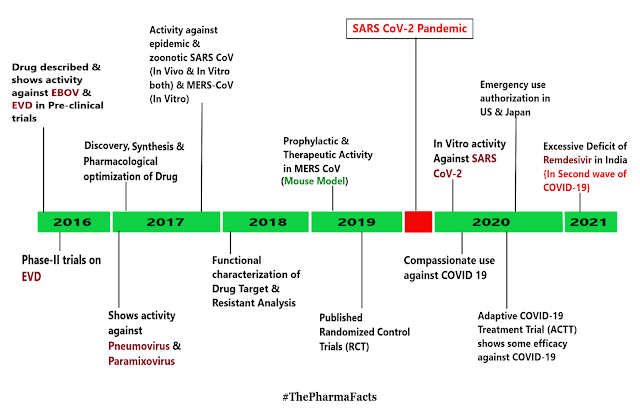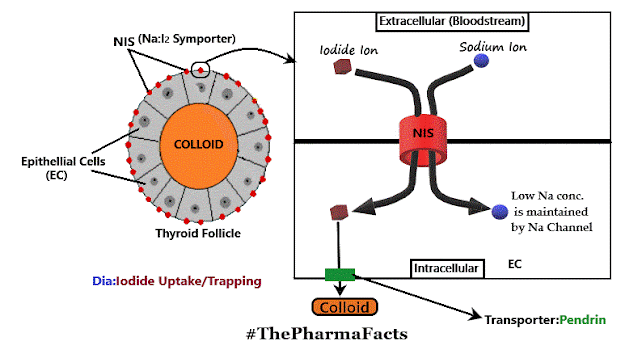Local Anesthetics
Local Anesthetics : (LA)
- These agents prevent generation and conduction of nerve impulses at the site of application or injection
- This leads to loss of sensation which is reversible
- Also causes absence of pain sensation at specific location without loss of consciousness hence also known as "Local Analgesics"
Routes of Administration :
i) Topical Anaesthesia (Surface)
ii) Intravenous (IV) - Either for regional nerve block or for large region block
iii) Spinal Anaesthesia (Within spinal theca)
Mechanism of Action of LA :
i) Generation and propagation of nerve impulses at the site of action on cell membrane are blocked
ii) Blocking of Na/K ATPase enzyme leads to Na & K ions influx & outflux restriction respectively therefore membrane stabilization
iii) Na-channel blocking prevents depolarization (i.e.more positive inside cell)
iv) This increases the threshold of excitability and thus block the nerve impulse conduction
Normal Nerve Conduction shown below :
SAR of LA :
Since, these drugs possess both hydrophilic as well as lipophilic parts, it shows Amphiphilic properties. As shown below in diagram ;
1) Lipophilic Group :-
- Lipophilicity is important to penetrate the lipid layer and reach the binding site on the the inside of the cell
- Lipophilic path contains aromatic moiety which either directly attached to carbonyl function (amino esters) or 2,6-dimethylphenyl group attach to carbonyl function through amino amide -(-NH-)- groups
- These groups are essential in binding of LA to channel receptor proteins
drug lipophilicity ∝ receptor affinity ∝ drug potency ∝ duration of action of drug
- Lipophilic groups are mostly Aryl groups since aryl group directly attached to carbonyl group enhancers and aesthetic activities
- An electron donating substituent at ortho or para or both positions in aryl group increases local anaesthetic potency
E.g. Benzocaine, Procaine, Butamben, Propoxycaine, Benoxinate
- Also, electron donating substituent give rise to Zwitterionic form and thus increases binding affinity of LA with receptors as shown below,
- Insertion of methyl in group between aromatic moiety & carbonyl function prohibits the formation of Zwitterionic form and hence greatly reduces the anesthetic potency.
- Electron donating group at ortho position of aromatic ring also provide suitable protection from Ester hydrolysis by inductive effect to give longer duration of action
E.g. Propoxycaine
- Electron withdrawing group at ortho position of aromatic ring makes the Ester group more susceptible to the Ester hydrolysis make drug with shorter duration of action
E.g. Chloroprocaine
- Aryl groups are attached to carbonyl group through -NH group in Anilide derivatives
- Aryl substitution with methyl group at both ortho positions is required to provide suitable protection from Amide hydrolysis to give longer duration of action in Anilide derivatives
E.g. Lidocaine, Etidocaine, Mepivacaine (-CH3 at both ortho positions)
2) Alkyl Chain :-
- 1 to 3 carbon chain essential to prolonged duration of action of LA by hindering the hydrolysis of esters and amides
E.g. Propoxycaine, Chloroprocaine (Esters)
Prilocaine, Etidocaine (Anilides)
3) Hydrophilic Group :-
- Secondary or tertiary amines which could be cyclic or noncyclic are attached for anesthetic activity
- This amine group forms water soluble salts with acids (as shown below) & that's why this group required to prepare parenteral preparations
Classification of LA :
1) Benzoic Acid Derivatives:
- Cocaine
- Hexylcaine (Cyclaine/Osmocaine)
- Meprylcaine (Epirocaine/Oracaine)
- Cyclomethycaine
- Piperocaine
2) Amino Benzoic Acid Derivatives:
- Benzocaine
- Butamben
- Procaine
- Butacaine
- Propoxycaine
- Tetracaine
- Benoxinate
3) Lidocaine/Anilide derivatives/Lignocaine:
- Lidocaine
- Mepivacaine
- Prilocaine
- Etidocaine
4) Miscellaneous:
- Phenacaine
- Diperodon
- Dibucaine (most potent, toxic & long acting LA)











Comments
Post a Comment
If you have any query or If you like the post,Please let me know.